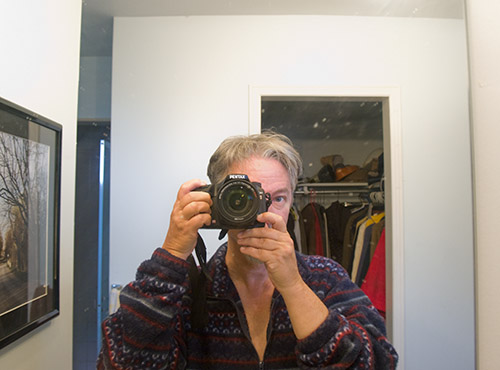Camera Lenses: a Crash Course
Page 6. Version 1.0, ©2008 by Dale Cotton, all rights reserved.
Sharpness
Fig. 11. A traditional test chart for measuring lens resolution
Very few dSLRs are available as I write this with fewer than 10 megapixels, which is nearly twice the 6 megapixels considered high-end only a few years back. But if the lens on such a camera doesn't exactly focus the in-coming light onto the sensor, the resulting blur will lay all that potential resolution to waste. You may as well be shooting a lower model camera.
Because of the design compromises issue already mentioned, sharpness isn't a single fact about a lens. Lenses are sharper at the centre than the edges, are sharper at some apertures than other apertures, and in the case of zoom lenses are sharper at some focal lengths than at others. Most recent zoom lenses are sharp enough to support 10 megapixels (APS-C) at apertures around f/4 to f/8 in the centre of the lens and in the middle of their focal length range. So an 18-55mm kit lens will probably give sharp results and minimal distortion when used between f/4 and f/8 and between 24 and 45 mm, but it's unlikely to remain sharp and low-distortion at the extremes of focal length and at the widest apertures. (Also, the laws of physics degrade sharpness the more the aperture is reduced below f/8 (due to something called diffraction, so all lenses will show that effect.)
It's simply a fact that wide angles are more difficult to design for SLR cameras (because the focal length is shorter than the gap between lens and sensor), so the more extreme the wide angle the more likely sharpness will be poor and/or distortion will be strong. A modern zoom lens that stays away from the wider focal lengths and only covers a modest range of focal lengths may perform very nearly as well as a prime in the same range of focal lengths. But the more wide angle coverage is involved, the more likely the lens will have problems.
Distortions

Fig. 12. Barrel distortion causes seemingly bulging walls – beyond correction at ultra wide angles

Fig. 13. Zooming in on some chromatic aberration (worst case scenario)
As we've already seen, there is no such thing as a perfect lens. There are problems keeping the edges sharp at the same time the centre is sharp. There are problems with lenses keeping straight lines straight at the edges. There are problems keeping lenses from refracting colours, which causes a rainbow-like effect called chromatic aberration or CA. There are problems keeping light from reflecting off the glass surfaces inside the lens and fogging the image; this is called flare. When you have a zoom lens all these problems are multiplied by the need to keep the previous problems in check at multiple focal lengths.
Some distortions are more problematic for one type of photography than another. Lenses that cause straight lines to bow, as in Fig. 12, are a show-stopper for architectural photography. Chromatic aberrations are especially visible at an edge where something relatively dark meets a bright area, such as a mid-day sky. Flare is most likely to occur when the camera is pointed more or less toward the sun or other bright light.
For more diagrams and detail on the various types of lens distortion see: the Aberrations section in this Wikipedia entry.
Lens coatings: flare usually shows as a slight haze that reduces the contrast or punch of an image. Lens elements usually have a coating to reduce reflections and therefore to reduce flare. These coatings show as coloured reflections when you look into the lens at certain angles. In Fig. 7 above, you can see greenish and reddish reflections off the front elements of the two lenses. These result from the particular chemical formula or formulas of the coatings used.